Well, you’re here, so you must be interested in knowing what I have to say about the #TakeAKnee-national anthem issue. I’ll try to make it worth your time.
First, a little background: If you had asked me to define patriotism, at different stages of my life, I might have given different answers. When I was a little girl, for example, it was all about the flag and the anthem. Some of that came about due to the influences of the Boy and Girl Scouts of America organizations. My siblings and I were taught from an early age to revere and respect Old Glory: the proper way to display it; how to fold it; never, ever to let it touch the ground; to remove your hat in its presence; how to properly retire worn or damaged ones (only in approved retirement ceremonies—I can count 6 flags I have disposed of in such a fashion in my adult life, FYI).
of America organizations. My siblings and I were taught from an early age to revere and respect Old Glory: the proper way to display it; how to fold it; never, ever to let it touch the ground; to remove your hat in its presence; how to properly retire worn or damaged ones (only in approved retirement ceremonies—I can count 6 flags I have disposed of in such a fashion in my adult life, FYI).
My siblings and I all participated in numerous flag ceremonies, and though I can’t speak for anyone else, I always felt an overwhelming sense of pride and awe and deep humility at participating.
That sense of pride and awe was augmented in later years by a growing sense of profound gratitude to our veterans; many members of my family have served our country faithfully and honorably, and more than one has died serving. As I grew older and learned more about their service, and the sacrifices our military men and women and their families make every single day, my determination to respect and honor our flag, as an extension of them, grew ever deeper.
To this day, I display the flag regularly at my home. Veterans Day, Memorial Day, 9/11, Flag Day—there are always flags displayed here. I stand for the national anthem and sing every single word (though I’ll confess, I didn’t know about the last verse until this week; if you don’t know what I’m talking about, you might want to click that link, because you won’t hear that sung at an NFL game).
 When I see a folded flag handed to a fallen service member’s family, or hear “Taps” played beside a flag-draped coffin, it never fails to move me to humbled, grateful tears. I’m angry when I see people not remove their hats during the anthem. It distresses me when I see them talk over it, or not put their hands over their hearts. It’s not how I was raised, and it is not how I raised my children. We’ve made several pilgrimages to the National Museum of American History to see the original Star Spangled Banner, and taking them to Fort McHenry to see where the anthem was written was a highlight of one of our recent summers.
When I see a folded flag handed to a fallen service member’s family, or hear “Taps” played beside a flag-draped coffin, it never fails to move me to humbled, grateful tears. I’m angry when I see people not remove their hats during the anthem. It distresses me when I see them talk over it, or not put their hands over their hearts. It’s not how I was raised, and it is not how I raised my children. We’ve made several pilgrimages to the National Museum of American History to see the original Star Spangled Banner, and taking them to Fort McHenry to see where the anthem was written was a highlight of one of our recent summers.
I share these things with you not because I’m trying to gain street cred with the anti-#TakeAKnee crowd; I share this with you because, if you’re one of them, I want you to know that I understand what the flag means to you. It means the same to me.
But now, if you’ll indulge me, a little more background of a completely different nature:
I could go on, but I hope, if you’re not a black person and you’ve read this far, (because my assumption is that if you’re black, you sure as shit don’t need me telling you any of this) that you are seeing a pretty blatant, systemic, and appalling pattern of inequality. If you’re white and you’ve read this far, and you’re still not seeing it, just stop reading now and go back to your Breitbart page. You’re probably a lost cause and the rest of this piece will just piss you off.
For the rest of you, I’ll continue:
Enter Colin Kaepernick. I didn’t even know who he was when he first started sitting during the anthem about a year and a half ago; when I heard about it, my initial reaction was “What a jerk! How dare he disrespect the flag like that?” (I’m sure some of you out there can relate to that response at this very moment.) Beyond the initial hubbub, I didn’t pay much attention after that. He was just one athlete, not disrupting the game, protesting some black thing or other—who knew? Like many of you (white) folks, I tuned him out and kept watching my beloved football.
But he kept sitting, and I started paying attention. Some folks—specifically, former Seahawks player and Green Beret Nate Boyer, among others—thought it was too disrespectful and encouraged him to kneel instead:
“We sorta came to a middle ground where he would take a knee alongside his teammates,” Boyer says. “Soldiers take a knee in front of a fallen brother’s grave, you know, to show respect. When we’re on a patrol, you know, and we go into a security halt, we take a knee, and we pull security.”
(https://www.cbssports.com/nfl/news/heres-how-nate-boyer-got-colin-kaepernick-to-go-from-sitting-to-kneeling/)
Interesting, huh? That Kaepernick took the advice of a former GREEN BERET on how to make his protest more respectful of veterans? Just putting that out there for folks to think about.
So, now on his knees, Kaepernick kept up his lonely practice during the anthem; the kerfuffle around it grew over the ensuing months, but, clearly, some folks still weren’t paying much attention, because:
- Samuel DuBose, a black man pulled over for a traffic stop, was shot and killed by police; charges against the officer were dismissed (though with prejudice)
- Sylville Smith, a black man pulled over for a traffic stop, was shot and killed by police; charges against the officer were dismissed (though there’s a LOT more to this story; you should read it)
- Philando Castile, a black man pulled over for a traffic stop, was shot and killed by police; charges against the officer were dismissed
…and this:
- Every black member of the 2016 University of Pennsylvania freshman class was apparently added to a racist social media group called “Mud Men.” The anonymous group’s creators then proceeded to announce an event called Daily Lynching for Nov. 17, 2016.
- Nooses, a common hate symbol associated with our country’s terrible history of lynching,
 were found at the National Museum of African American History in D.C.; outside the Brooklyn Public Library and the Brooklyn Museum; near a D.C. elementary school and outside a condo in Montgomery County, MD, to name just a few
were found at the National Museum of African American History in D.C.; outside the Brooklyn Public Library and the Brooklyn Museum; near a D.C. elementary school and outside a condo in Montgomery County, MD, to name just a few
- Richard Collins III, a newly commissioned U.S. Army second lieutenant, was stabbed to death at a Maryland bus stop by Sean Christopher Urbanski, member of a Facebook group called “Alt-Reich,” which “spews hatred toward minorities ‘and especially African-Americans,’ University of Maryland Police Chief David Mitchell said.” (http://www.cnn.com/2017/05/22/us/university-of-maryland-stabbing/index.html)
- CHARLOTTESVILLE It’s a pretty big topic, so I’ll just leave that there for you to explore on your own. (Fun fact: As much public outcry as Charlottesville received in the media, there were only 49,900,000 results for that search on Google; The Talk got more—wonder why)
- The United Nations issued a rare warning over ‘alarming’ racism in the U.S. (http://www.aljazeera.com/news/2017/08/issues-rare-warning-alarming-racism-170823225952827.html)
I could go on and on and on with the list of hateful, racist incidents that have happened in this country just since Colin Kaepernick first took a stand over a year ago, but—and here’s the point I’m trying to make—if I have to go on, if I have to point out more and more instances of black Americans being marginalized, penalized, brutalized, because you’re still not convinced that this protest is not about the flag or the anthem but rather is to bring attention to the real, systemic, appalling injustices being done to our fellow Americans of color, if you’re still not seeing it, then you will NEVER understand, and you, in fact, by not seeing it, are part of the problem, like it or not. You may not be an overt racist, but you are for damned sure, an enabler of racism, at minimum.
If you’ve been following my posts on Twitter and Facebook, then you’ve been seeing a lot of support for the #TakeAKnee movement. That decision was not made lightly or without consideration on my part. I love my country. I love my flag. I love my national anthem. I am grateful every single damned day to the veterans who have served, sacrificed, fought, and died under that flag, and the idea of causing them one IOTA of pain by having them believe this protest is about THEM, is a disrespect to THEM, is anyone somehow spitting on them, is one of the most painful misconceptions surrounding this entire movement.
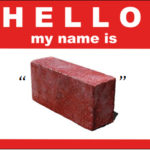 There’s an old saying that goes, “God whispers in our souls and speaks to our hearts. Sometimes when we don’t have time to listen, He has to throw a brick at us.” Right now, like many Americans, maybe you’re feeling like Kaepernick and the NFL and the NBA and the MLB and Stevie Wonder and Eddie Vedder and Dale Earnhardt, Jr. are throwing bricks right at your face, and those bricks fucking hurt.
There’s an old saying that goes, “God whispers in our souls and speaks to our hearts. Sometimes when we don’t have time to listen, He has to throw a brick at us.” Right now, like many Americans, maybe you’re feeling like Kaepernick and the NFL and the NBA and the MLB and Stevie Wonder and Eddie Vedder and Dale Earnhardt, Jr. are throwing bricks right at your face, and those bricks fucking hurt.
I understand, I do. I understand that maybe a lot of people in this country wish with all their hearts we could all go back to standing together again, proudly pretending under the flag and anthem of our United States that those hallowed symbols mean the same to everyone else as they have meant to so many others, myself included, their whole lives.
But we, America, have been failing people of color in this country for generations, and it is time for us to stop pretending and start uniting around fixing that. A piece of fabric, no matter how hallowed, or a song, no matter how revered, is not a person. It’s not a country. There are real people in this country, with real problems. They have tried everything to get our attention—violent protests, peaceful protests, sit-ins, walkouts, boycotts, you name it (just ask The Daily Show’s Trevor Noah: “When Is The Right Time For Black People To Protest?”), and somehow, we’re still not listening. How is that even possible, that we could be so blind and deaf to each other?
So they threw a brick, and they knelt during something we have always held dear. And it hurts. It’s painful. It “denigrates our traditions” and “our historic belief system.” It “disrespects our core values.” It’s “offensive.” I get it.
But you know what’s more offensive? Forcing people to practice someone else’s belief system. You want to stand? Stand. No one is stopping you. They want to kneel? Let them kneel. It’s their right, and their exercising of that right takes nothing away from your right to exercise yours.
For most of my life, when I have looked up at the flag, when I have listened to the national anthem, I have felt nothing but pride, love, gratitude and respect that I had the great good fortune to be born an American, and all the rights and benefits and privileges that that birthright affords me—just because I was born lucky.
But I also had the great good fortune to be born white, and therefore, I enjoy all the rights and benefits and privileges that that affords me, again, just because I was born “lucky.” This is an important point here, so please forgive the shouty caps, but: EQUALITY SHOULD NEVER COME AS A RESULT OF LUCK.
We may say in this country that “All Men Are Created Equal,” but it’s for damned sure that from the moment of their creation, Americans of color sure as hell are not treated as equal.
If they were, if things like I posted earlier in this piece did not happen every single day to black Americans in every city, in every county, in every state of our entire country, no one would feel compelled to protest. Black Americans would all be able to stand proud, in awe, in gratitude, in respect of how good their country has been to them. But, unlike for white Americans, that is simply not the case for far too many. Their experiences under our flag have been vastly different than those of white Americans, and those experiences continue to present a dauntingly, dishearteningly formidable barrier to their attainment of all the good that our country could do for them, but historically, has not.
As a child, I didn’t see that. As a young adult, I began to see it, but didn’t yet understand it. Now, in my middle age, I’m trying my hardest to open my eyes wide and see that brick for what it is, to recognize it, to name it, to own it, no matter how it hurts, no matter how it shatters the rose-colored glasses I’d viewed my country—or myself—with up until now.
Maybe you feel like, because you’re not overtly racist in your everyday life, that that’s enough; that passive, complacent non-engagement will somehow magically make things better for any blacks who are still somehow feeling angry or frightened or oppressed in this day and age (go figure!) rather than just feeling grateful that they’re being “allowed” to make money or that they’re not being “shot in the head.” But that’s not enough, not when people are being incarcerated, are being brutalized, are being denied their votes, are, in point of fact, being shot down in the streets, in ways that white people can never fully imagine.
We, white America, we created this #TakeAKnee brick, by not listening, by not understanding, by living on in blissful, willful ignorance of the suffering of people of color around us every day. We own this brick. If it hurts, now that it’s hitting us, we deserve it. We can either take that brick and use it as the foundation of renewed efforts to try to build something better for EVERYONE in this country, or we can hurl it right back at the protesters and keep on revering something that only applies to some Americans and leaves all others scrabbling in the dust we leave behind. We can choose to call them ungrateful, traitors, garbage, vilify them for exercising their constitutionally-protected right to free speech—all because they are trying to open our eyes to their pain, a pain that we, in our ignorance, in our complacency, in our failure to hear and to help, perpetuate. OR we can choose to listen.
I know what I feel called to do, what I choose to do. I love my country. I love my flag. I love my national anthem. I respect in every possible way our veterans and their service. When they play the anthem, I will still stand, hand over my heart. My eyes will still fill with tears when I hear “Taps” play, and I will still bow my head and remember with gratitude the honor and sacrifice of all the men and women who served and sacrificed under that flag so that I could live free. I will do these things not out of blind allegiance, not out of stubborn, fossilized patriotic sentiment, and not out of willful ignorance of what those people kneeling are trying to tell me or as a slam 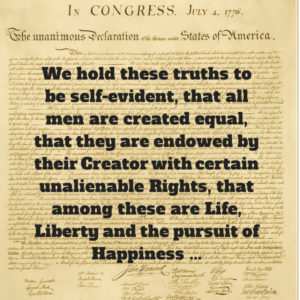 that my patriotism is somehow more authentic and sincere than theirs. I will stand because I still love my country, because I still respect the better angels of our nature and our history, and because yes, for me, those symbols still represent the most important American principle of all: that ALL MEN ARE CREATED EQUAL. I will stand FOR the right for ALL Americans to kneel, to protest, to stand, to sit, to sing, to be silent, however they choose to exercise their right to work toward that principle becoming a reality for every American. That is my choice. Kneel beside me, or stand beside me, I respect your choice and your freedom, no greater or less than mine, to express it.
that my patriotism is somehow more authentic and sincere than theirs. I will stand because I still love my country, because I still respect the better angels of our nature and our history, and because yes, for me, those symbols still represent the most important American principle of all: that ALL MEN ARE CREATED EQUAL. I will stand FOR the right for ALL Americans to kneel, to protest, to stand, to sit, to sing, to be silent, however they choose to exercise their right to work toward that principle becoming a reality for every American. That is my choice. Kneel beside me, or stand beside me, I respect your choice and your freedom, no greater or less than mine, to express it.
But then, to my brothers and sisters who choose to kneel with respect and with humility, with quiet, dignified desperation, who are pleading for us to hear the cries of need coming from black communities all over this country, to them, I will extend my hand and tell them, “I see you. I hear you. I am with you. How can I help?”
Please, don’t call the kneelers garbage. Don’t call them traitors. Don’t imply that your love of country is somehow greater than anyone else’s, or that your need to revere our country’s symbols is greater than another’s need to try help others enjoy the same opportunities and privileges you experience, things they are systemically denied because of the virulent racism still poisoning our country. Their kneeling takes nothing away from your standing; it only gives a voice to the voiceless, and it’s time for us all to listen.
We are all Americans, flawed and struggling and imperfect. As Americans, we have the right to speak out against true injustice, against true inequality, and what’s more, as human beings, we have the obligation—that’s one of the things this country was founded upon, and it’s one of the principles generations of Americans have fought and died to defend. So don’t spit on people who are exercising those rights to try to make this country a better place for all.
It’s not about the flag. It’s not about the anthem. It’s not about veterans. If you still think it is, after reading this whole long, damned piece, then I respect your right to disagree, to be pissed, to nurture your hurt in your determination to see it that way. But, with respect, it’s simply not—it’s a brick, and now that it’s got your attention, it’s time for us to take that brick and use it to build something better for everyone (and it won’t be a goddamned wall, either), something worth flying a flag over.
That’s all I have to say.
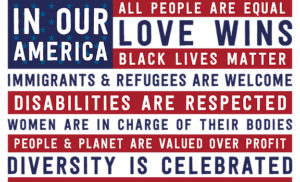

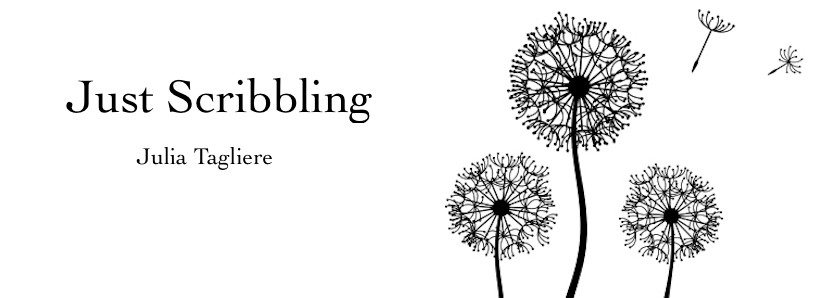
 of America organizations. My siblings and I were taught from an early age to revere and respect Old Glory: the proper way to display it; how to fold it; never, ever to let it touch the ground; to remove your hat in its presence; how to properly retire worn or damaged ones (only in approved retirement ceremonies—I can count 6 flags I have disposed of in such a fashion in my adult life, FYI).
of America organizations. My siblings and I were taught from an early age to revere and respect Old Glory: the proper way to display it; how to fold it; never, ever to let it touch the ground; to remove your hat in its presence; how to properly retire worn or damaged ones (only in approved retirement ceremonies—I can count 6 flags I have disposed of in such a fashion in my adult life, FYI). When I see a folded flag handed to a fallen service member’s family, or hear “Taps” played beside a flag-draped coffin, it never fails to move me to humbled, grateful tears. I’m angry when I see people not remove their hats during the anthem. It distresses me when I see them talk over it, or not put their hands over their hearts. It’s not how I was raised, and it is not how I raised my children. We’ve made several pilgrimages to the National Museum of American History to see the original Star Spangled Banner, and taking them to Fort McHenry to see where the anthem was written was a highlight of one of our recent summers.
When I see a folded flag handed to a fallen service member’s family, or hear “Taps” played beside a flag-draped coffin, it never fails to move me to humbled, grateful tears. I’m angry when I see people not remove their hats during the anthem. It distresses me when I see them talk over it, or not put their hands over their hearts. It’s not how I was raised, and it is not how I raised my children. We’ve made several pilgrimages to the National Museum of American History to see the original Star Spangled Banner, and taking them to Fort McHenry to see where the anthem was written was a highlight of one of our recent summers.
 were found at the National Museum of African American History in D.C.; outside the Brooklyn Public Library and the Brooklyn Museum; near a D.C. elementary school and outside a condo in Montgomery County, MD, to name just a few
were found at the National Museum of African American History in D.C.; outside the Brooklyn Public Library and the Brooklyn Museum; near a D.C. elementary school and outside a condo in Montgomery County, MD, to name just a few There’s an old saying that goes, “God whispers in our souls and speaks to our hearts. Sometimes when we don’t have time to listen, He has to throw a brick at us.” Right now, like many Americans, maybe you’re feeling like Kaepernick and the NFL and the NBA and the MLB and Stevie Wonder and Eddie Vedder and Dale Earnhardt, Jr. are throwing bricks right at your face, and those bricks fucking hurt.
There’s an old saying that goes, “God whispers in our souls and speaks to our hearts. Sometimes when we don’t have time to listen, He has to throw a brick at us.” Right now, like many Americans, maybe you’re feeling like Kaepernick and the NFL and the NBA and the MLB and Stevie Wonder and Eddie Vedder and Dale Earnhardt, Jr. are throwing bricks right at your face, and those bricks fucking hurt. that my patriotism is somehow more authentic and sincere than theirs. I will stand because I still love my country, because I still respect the better angels of our nature and our history, and because yes, for me, those symbols still represent the most important American principle of all: that ALL MEN ARE CREATED EQUAL. I will stand FOR the right for ALL Americans to kneel, to protest, to stand, to sit, to sing, to be silent, however they choose to exercise their right to work toward that principle becoming a reality for every American. That is my choice. Kneel beside me, or stand beside me, I respect your choice and your freedom, no greater or less than mine, to express it.
that my patriotism is somehow more authentic and sincere than theirs. I will stand because I still love my country, because I still respect the better angels of our nature and our history, and because yes, for me, those symbols still represent the most important American principle of all: that ALL MEN ARE CREATED EQUAL. I will stand FOR the right for ALL Americans to kneel, to protest, to stand, to sit, to sing, to be silent, however they choose to exercise their right to work toward that principle becoming a reality for every American. That is my choice. Kneel beside me, or stand beside me, I respect your choice and your freedom, no greater or less than mine, to express it.
 Sending out a brief message of heartfelt gratitude today to
Sending out a brief message of heartfelt gratitude today to 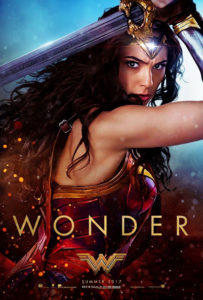 I went and saw Wonder Woman last night with my husband, our two teenaged sons, and our college-bound daughter. It wasn’t my first superhero movie; we’ve seen enough of those that one might even call me a bit jaded about the genre (except for
I went and saw Wonder Woman last night with my husband, our two teenaged sons, and our college-bound daughter. It wasn’t my first superhero movie; we’ve seen enough of those that one might even call me a bit jaded about the genre (except for  not only the wisdom, the life experiences, the different perspectives each one of us brings to the world, but also the shared life experiences we all have in common, no matter who we are. If we spent more time listening to the women around us, hearing their stories—not just our mothers and sisters, but every woman—just imagine how much we could learn from each other, and how powerful we could become.
not only the wisdom, the life experiences, the different perspectives each one of us brings to the world, but also the shared life experiences we all have in common, no matter who we are. If we spent more time listening to the women around us, hearing their stories—not just our mothers and sisters, but every woman—just imagine how much we could learn from each other, and how powerful we could become. you are given. Love its curves, love its strength, love its softness, love all the amazing things it can do. Dress in a way that makes you feel good about you, because nobody else’s opinion matters. Addendum:
you are given. Love its curves, love its strength, love its softness, love all the amazing things it can do. Dress in a way that makes you feel good about you, because nobody else’s opinion matters. Addendum: 
 fight for them, rescue them, govern them—well, that one’s another post altogether) they can do for themselves now. It may unnerve some men to think about it, but researchers say they’re even getting closer to a woman
fight for them, rescue them, govern them—well, that one’s another post altogether) they can do for themselves now. It may unnerve some men to think about it, but researchers say they’re even getting closer to a woman 
 By the same token, however, and I hope that this relaxes that pinching jockstrap a bit, a man doesn’t really “need” a woman, either. Thanks to the enlightenment of the past few decades, we know men can do virtually everything we used to think they “needed” a woman to do: cook, clean, sew, raise babies (and not just in some
By the same token, however, and I hope that this relaxes that pinching jockstrap a bit, a man doesn’t really “need” a woman, either. Thanks to the enlightenment of the past few decades, we know men can do virtually everything we used to think they “needed” a woman to do: cook, clean, sew, raise babies (and not just in some 

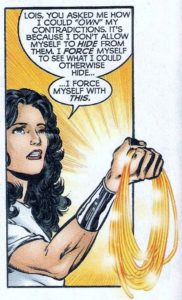
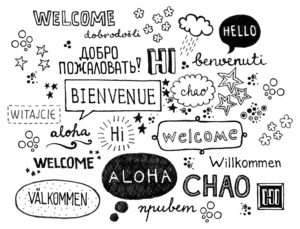
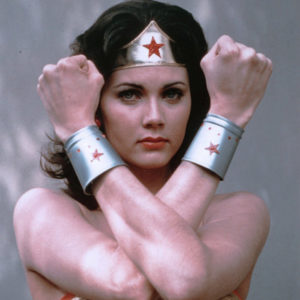
 You may notice my ring—the chunky, silver peace symbol against a field of black I often wear on my right ring finger—and, given today’s climate, you may think you know something about me. Once, its symbolism may have conjured thoughts of “hippies” or “peaceniks,” but today, more likely, it conjures an image of a “snowflake,” or perhaps even a “libtard.” Maybe you look at my ring and think, “What a liberal, running out and buying a peace ring, of all things. Hippy freak.”
You may notice my ring—the chunky, silver peace symbol against a field of black I often wear on my right ring finger—and, given today’s climate, you may think you know something about me. Once, its symbolism may have conjured thoughts of “hippies” or “peaceniks,” but today, more likely, it conjures an image of a “snowflake,” or perhaps even a “libtard.” Maybe you look at my ring and think, “What a liberal, running out and buying a peace ring, of all things. Hippy freak.”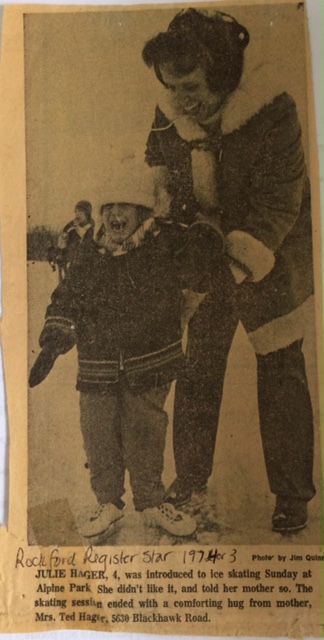 community. I was four years old, and Mom had decided to take me ice skating for the first time. As you can see from the image, it was not something I took to willingly. A photographer for our local newspaper, The Rockford Register Star, saw my mother smiling and laughing, and me, wailing and fussing, and thought it was a cute human interest pic (sadist).
community. I was four years old, and Mom had decided to take me ice skating for the first time. As you can see from the image, it was not something I took to willingly. A photographer for our local newspaper, The Rockford Register Star, saw my mother smiling and laughing, and me, wailing and fussing, and thought it was a cute human interest pic (sadist).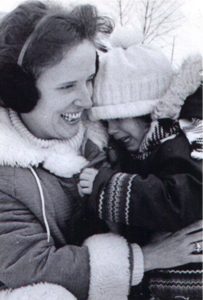
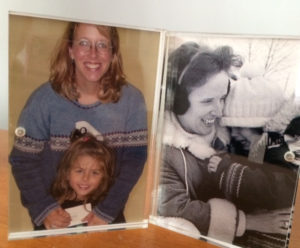 Notice the ring on my finger (and notice the smile on her face, so unlike her mother). On my dresser now, years later, the pictures, one of me and my mother and her ring, and the other of me and my daughter and the same ring, are a concrete, tangible link from one precious life, one precious love, to the other.
Notice the ring on my finger (and notice the smile on her face, so unlike her mother). On my dresser now, years later, the pictures, one of me and my mother and her ring, and the other of me and my daughter and the same ring, are a concrete, tangible link from one precious life, one precious love, to the other.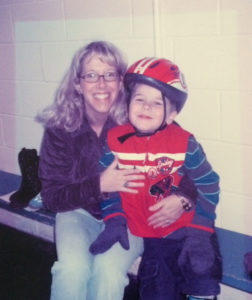

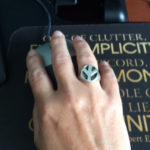 Notice my ring. Yes, it’s a peace symbol, a call sign for hippies, peaceniks, and snowflakes alike. Yes, it’s big and it’s clunky, not delicate or expensive or particularly feminine. But for me, wearing my mother’s ring has never been about what’s on the outside—it’s always been about all that it has held inside.
Notice my ring. Yes, it’s a peace symbol, a call sign for hippies, peaceniks, and snowflakes alike. Yes, it’s big and it’s clunky, not delicate or expensive or particularly feminine. But for me, wearing my mother’s ring has never been about what’s on the outside—it’s always been about all that it has held inside.